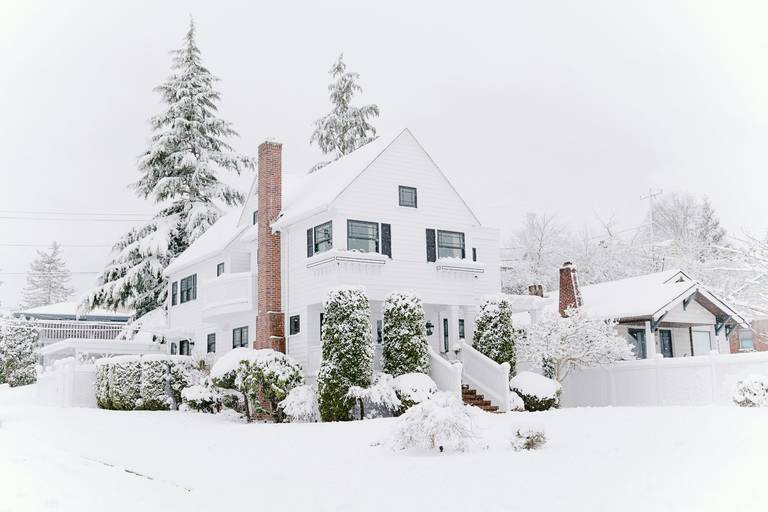How to Winterize Your Rental Property

As the snow begins to fall and the temperature drops, it is important to know that your property and its occupants will be comfortable and protected from the harsh winter elements. There are many things to consider when winterizing your property, so here is a comprehensive guide of practical tips to ensure a seamless transition into the winter months.
Exterior Maintenance
Before the snow hits, you want to complete a full review of the exterior of your property. First, make sure to inspect the foundation, sidewalks and driveways for cracks. If there are any major ones that can lead to property damage or tenant harm, call an inspector and schedule a repair to fix it if possible.
Next, check the roof of the property. Keep an eye out for any damaged or missing shingles that need replacing. If there has been a history of leaks, make sure to look for new fractures and review previously repaired spots to prevent any water damage. While you’re on the roof, make sure to inspect the chimney for any mould. Also, clear the gutters of any leaves and debris. This will help prevent clogging. Once you’re off the roof, make sure the downspout from the gutter is facing away from the foundation of the property.
If there are any exposed pipes, ensure those are insulated to avoid freezing. This should also be done in colder areas of the home, such as in basements. At this point, it is also a smart idea to disconnect and drain any outdoor hoses and store them inside during the colder months.
Next, make sure to tidy up the landscaping. Trim tree branches, cover bushes, cut the grass and clear any debris that could be a hazard when covered in snow. Also, ask the tenants to either secure or remove their outdoor furniture.
Lastly, snow removal is crucial for maintaining accessibility and safety during the winter. Ensure there is plenty of rock salt, ice melter and a sturdy shovel on the premises. Arrange regular visits from snow removal companies to make sure the roads in the area are clear.
Interior Maintenance
The winterization of your interior is just as important as the exterior. Start by calling in a professional inspector to make sure that all heating systems – such as furnaces and water heaters – are working properly and providing adequate ventilation. It is also important to change the filters on the furnace and flush the water heater to remove sediment. Water heaters should be set around 49°C / 120°F during the colder months.
Next, check the insulation around the home, especially in your attic and basement. This will prevent any air from escaping, keeping the house warm all winter. If you think you need to install more, contact a professional. Installing a programmable thermostat will also help regulate home heating.
Check your doors and windows for any drafts or gaps in the seal and add caulking and weatherstripping to minimize energy loss. Also make sure to remove any window AC units as they can collect snow and put strain on the windowsill, ultimately damaging the home. If you’re looking for extra insulation, consider putting up window film. It is inexpensive, easy to install and will help the house stay warm throughout the winter.
Examine all smoke and carbon monoxide detectors to make sure they are functional. Swap out the batteries with new ones to ensure they stay active all winter.
It is important to be prepared in the case of an emergency. Create and store an emergency kit in the home for tenants. Its content should include blankets, water, flashlights and non-perishable food among other things. Inform the residence of where the circuit breaker is and how to shut off the water. Provide them with an emergency contact that can be used to reach you at any time.
What To Do If You Have a Vacant Property
If you have a property that is sitting empty, it is important to thoroughly winterize there as well. Make sure to shut off the water and drain the pipes to avoid any freezing and cracks. Unplug appliances and turn off gas lines to prevent damage and avoid a house fire. Lastly, keep the house at a low but consistent temperature. We recommend keeping the home around 13-16°C / 55-60°F.
Follow for more landlord tips!